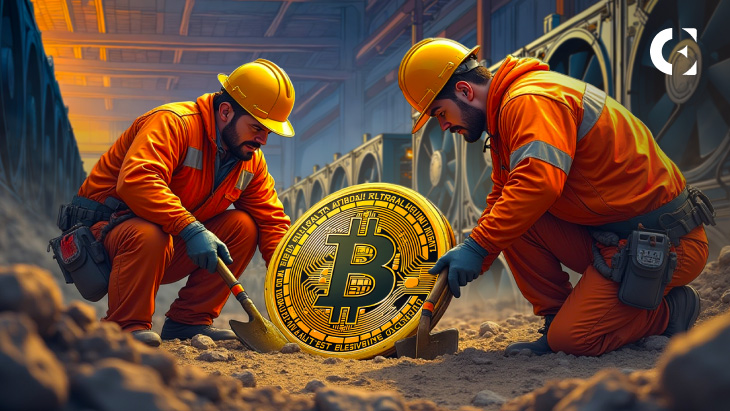A few decades ago, the word “mining” only made people think of digging into the earth for coal, gold, or precious metals. However, in the current digital world, mining has a whole new meaning, especially in the cryptocurrency community. Although many have heard about Bitcoin mining, few understand how it works or why it’s such a critical component of the network. This article explores the mechanics, economics, technology, challenges, and future of Bitcoin mining.
Table of contents
The Purpose of Bitcoin Mining
Bitcoin mining performs two essential functions in the Bitcoin network. Firstly, it creates new bitcoins that enter into circulation. Secondly, it validates and secures transactions on Bitcoin’s decentralized ledger, known as the blockchain to prevent double-spending. Unlike traditional financial systems that rely on centralized authorities like banks and governments, Bitcoin operates through a decentralized network of miners who compete to verify transactions and maintain the network’s integrity.
Notably, the blockchain could be nicknamed as the heart of Bitcoin, as it plays a pivotal role by storing the transactions made. Rather than relying on a single authority, it’s distributed across thousands of nodes worldwide. Every block in the chain contains:
- A timestamp
- Transaction data
- A reference to the previous block (hash)
- A unique cryptographic hash for that block
Miners validate new transactions and add them to the chain, making it tamper-proof and permanent. By interconnecting the hashes of the blocks, attackers cannot manipulate the blocks, as it requires more energy, time, and effort.
Proof of Work
The actual process in Bitcoin mining is the Proof of Work (PoW). Miners compete to solve a complex mathematical problem and generate a cryptographic hash of a 64-digit hexadecimal number using the SHA-256 algorithm. Their objective is to find a hash that falls below a target value set by the network. A pure trial-and-error pattern, miners make several guesses to reach the right number. When a valid hash is found, the miner broadcasts it on the network for verification. Once verified by validators, the miner adds the block to the blockchain and earns the reward.
The Significance of Hash
A Bitcoin hash is a 64-character string containing both numbers and letters. This is because Bitcoin uses the hexadecimal system (base 16), not the standard decimal (base 10). In hexadecimal, each digit has 16 possible values: 0–9 and A–F, allowing more combinations than the decimal system. A 64-digit hexadecimal hash offers 16 to the power of 64 (16⁶⁴) possible combinations, a large number providing strong cryptographic security.
Miners aim to find a hash lower than Bitcoin’s target hash value. Because miners can compute trillions of hashes per second, the network adjusts the difficulty to maintain a stable mining rate. The process of finding the correct hash involves changing a value called the nonce, short for “number only used once.” The nonce in a Bitcoin block can hold around 4.3 billion possible values. Once all nonce values are tried, miners can use an extra counter called the extra nonce, enabling more combinations.
When information is hashed, it always produces the same output unless the input changes. So, the mining program sends block information with a zero as the first nonce, and if the number is wrong, the nonce is increased by one, and a new hash is generated. This process continues until a hash with a value less than the target hash is generated.
Miner Rewards
Miners who successfully validate a block are rewarded with both Bitcoins and the transaction fees included in that block. However, there is a small glitch. Every four years, the Bitcoin rewards get reduced. When Bitcoin was launched in 2009, the rewards given to miners were 50 BTC per block. Later in 2012, it was reduced to 25, and currently, miners earn 3.125 Bitcoins as of the 2024 halving. The next halving, expected in 2028, will give miners only 1.5625 bitcoins. This mechanism will continue until the maximum supply of 21 million bitcoins is reached, which would be exhausted by the year 2140.
What Happens When Two Miners Get the Answer?
If two Bitcoin miners solve the puzzle simultaneously, both blocks are broadcast to the network, creating a temporary split or “fork” in the blockchain. While one node is considered valid and added to the chain, the other block is discarded as an ‘orphan block’ and its transactions are returned to the mempool to be mined again. Only the miner whose block becomes part of the longest chain receives the reward, while the other one gets nothing.
Meanwhile, the time taken to mine a block is approximately 10 minutes. To keep it at that average time, the network difficulty of Bitcoin varies about every two weeks. The difficulty of mining a block increases as the number of miners on the network grows, making it more difficult and time-consuming to mine one Bitcoin.
Why Bitcoin?
The main priority is the accumulation of the asset. The king of crypto, which recently hit an ATH of $111K has garnered investor interest, and if miners mine the crypto, their reward will enable them to have a sizeable hold on Bitcoin. Apart from Bitcoin, Litecoin, DOGE, Monero, ZCash, and Dash can be mined, and each one comes with its own levels of rewards and difficulty levels. However, after 21M BTC are mined, miners would receive transaction fees as their only reward.
Mining Equipment
If you are a novice and want to start on a budget, you can use your CPU and mine coins like Monero and Ravencoin. However, with ASIC-powered systems, Bitcoin, Litecoin, and ZCash can be mined. During the early stages of mining, CPUs were commonly used, but with the advent of time and the development of miners, GPUs came into existence.
The Graphics Processing Unit (GPU) provided more power and efficiency, but was not effective for mining Bitcoin due to the network’s difficulty levels. Following this, Field-Programmable Gate Arrays or FPGAs came about, providing better performance. The latest to join the list is Application-Specific Integrated Circuit (AISC), designed for the sole purpose of Bitcoin mining. However, with advanced equipment, miners have to incur heavy costs like electricity, cooling conditions, and maintenance.
With various systems trying to keep afloat the concept of mining, the strength of miners has only multiplied. Further, combining their computational power, the miners form a mining pool, and rewards are shared. This enables miners to predict their hash more easily, compared to their solo mining ventures.
Environmental Impact
The major concern in Bitcoin mining is the energy consumption, ranging from 100 to 140 terawatt-hours annually, leading to critics stating that it contributes to carbon emissions. However, there are cases wherein mining was conducted via renewable energy like hydro and wind. Notably, in October 2021, El Salvador, a country in Central America, announced mining Bitcoins via volcanic power. Some mining operations also take advantage of stranded or surplus energy that would otherwise go to waste, thereby helping stabilize energy grids and even incentivizing the development of renewable energy infrastructure.
Regulatory Compliance
Globally, Bitcoin mining regulations vary widely, just like crypto trading. While China has entirely banned the concept of cryptocurrency, the USA has regulations that differ in each state. On the other hand, Kazakhstan allows mining with increased regulatory scrutiny, while the European Union continues to debate restrictions due to environmental concerns. As Bitcoin’s popularity grows, regulatory frameworks around the world evolve, influencing where and how mining operations are conducted.
Security Risks
Bitcoin mining faces several risks, one of which is the 51% attack. which could occur if a single entity or coalition of miners gains control of more than half of the network’s total mining power. This could allow them to reverse transactions, engage in double-spending, or disrupt the network’s normal operation. While such an attack is theoretically possible, the scale, cost, and coordination required make it highly impractical for Bitcoin at its current level of decentralization. Another risk discussed in academic circles is selfish mining, where miners intentionally withhold valid blocks to gain an advantage, although this strategy has not posed a significant threat in practice.
Future of Bitcoin mining
Looking ahead, several trends will shape the future of Bitcoin mining. As block rewards continue to decrease due to halving events, miners will become increasingly reliant on transaction fees as their primary source of revenue. Despite evolving challenges, Bitcoin mining remains a cornerstone of the cryptocurrency ecosystem, playing a vital role in maintaining the security, decentralization, and integrity of the Bitcoin network. As technology progresses and global interest in Bitcoin grows, mining will undoubtedly continue to adapt and evolve in the coming years.
Disclaimer: The information presented in this article is for informational and educational purposes only. The article does not constitute financial advice or advice of any kind. Coin Edition is not responsible for any losses incurred as a result of the utilization of content, products, or services mentioned. Readers are advised to exercise caution before taking any action related to the company.







